All Activity
- Last week
-
Sean McGowan was a featured guest at Steve's Fingerstyle Retreat a couple of years ago. Most of his presentation had to do with Fingerstyle Jazz, but he did touch on some of these Holistic topics as well.
- Earlier
-
untilLive Lesson with Steve Krenz from Nashville, TN, 7:00 pm CT. Topic to be announced.
-
untilLive Lesson with Steve Krenz from Nashville, TN, 7:00 pm CT. Topic to be announced.
-

Excel EXL-1 vs Broadway
Eracer_Team-DougH replied to V7#5b9's topic in Guitar Gear, Amps, Effects, Pedals
Very jazzy -
I don’t recall anybody ever posting a comparison of their two or more guitars of the same type. So I thought it wouldn’t be a bad idea. Besides, I’m enjoying my retirement and more spare time. As I had indicated in my Epiphone Broadway post I wanted D’Angelico Excel EXL-1 for a long time. It wasn’t easy to get my hands on it, but I finally did it. To digress for a moment, I already have an Excel EX-DC (semi-hollow) which I got back in 2014, shortly after the brand had re-entered the market. Back then I figured they needed to put out good products to succeed. I wasn’t wrong. Frankly, it rivals my Gibson ES-335 and although I called my Gibby the real deal I actually bought a not-so-cheap piece of nostalgia. Don’t get me wrong. I dig my Gibby and it’s a great guitar, but I’m more and more convinced that I got myself an image. There are guitars just as good if not better out there. Back to the main theme. It’s been over a decade since D’Angelico hit the market and I hoped they didn’t begin to slack. Again, I wasn’t wrong. I can’t speak for every single one, but my Excel EXL-1 is literally flawless in terms of craftsmanship with great setup and crazy low action. I love it. What struck me the most was the acoustic quality of the instrument. It sounds strikingly similar to D’Angelico Originals. Maybe it’s got something to do with D’Angelico Electrozinc round wound strings which apparently are the re-creation of the original invention by renowned luthier John D’Angelico and master string maker John D’Addario. Regardless, the arch-top is a keeper for sure. And so is the customized Broadway. I put a fret wrap behind the nut and rubber grommets behind the bridge to eliminate micro-overtones. The Broadway sounds cleaner this way. With Gibson ‘57 Classic humbucker in the neck position the Broadway sounds like the real L-5. Of course, the Henriksen amp handles the arch-tops or any other guitar superbly, giving you that classic jazz tone. Picture included. So how do they compare? Let’s consider some differences: Excel EXL-1 vs Customized Broadway Strings: D’Angelico Electrozinc Jazz 12-52 D’Addario Chromes 12-52 flat wound Fingerboard: Ebony Pau Ferro Body Depth: 3” 3 1/8” Bridge: Ebony Pau Ferro Tailpiece: D’Angelico Stairstep Frequensator Neck Pickup: Saymour Duncan 59 humbucker Gibson 57 Classic humbucker Made in: Korea China Obviously, they sound similar, but not the same. Each one has its own character or voice. Both have a broad dynamic range and sound good acoustically. The D’Angelico with a single humbucker and controls mounted on the pick-guard has more going for it in that respect. Plugged in they both can sound very similar depending on the EQ. On the scale from one to ten I’ll give D’Angelico 10 out of 10 and Epiphone 9 out of 10.
- 1 reply
-
- 2
-

-
"In his new book, The Holistic Guitarist, Acoustic Guitar contributing editor Sean McGowan offers a comprehensive approach to staying healthy, practicing creatively, and improving as a musician."
-
untilLive Lesson with Steve Krenz from Nashville, TN, 7:00 pm CT. Want Better Solos? Think Like a Singer.
-
That was very cool! Loved it!
-
-
untilLive Lesson with Steve Krenz from Nashville, TN, 7:00 pm CT. Great Chord Moves in E.
-
It seems you have an odd set of posting here in a Guitar Forum. our main focus is guitar playing, getting better at music and for some learning to play gig's (which I can attest is very difficult) this is not a forum on AI song stealing and in this case a discussion on how to become a DJ. If you want DJ advice.. go to Guitar Center .com and type in DJ equipment. you'd get lots of gear and price points to choose from. nobody uses 'records' in DJ'ing any more and Guitar Center search will provide you help on your quest.
-
Thanks in advance for sharing your journey and insights!
-
Hey everyone! I’ve recently gotten interested in DJing and would love to hear from those with experience. How did you first get started as a DJ? Did you take any courses or were you self taught? What gear did you begin with and what do you wish you knew when starting? I’m trying to figure out the best path to take, whether to start with a controller, go straight to turntables or use software. Any advice, tips or personal stories would be awesome.
-
I've spent a little over 3 weeks on this session. I can play the scale shapes fairly well in any key and I can solo over the backing tracks provided somewhat competently, I can connect the scale shapes as well, and also do the set exercises in the book. The only thing I haven't really done is actually memorize the pentatonic notes for all the keys and start memorizing the fretboard through the scale. I think I'll be moving on at this point to the next session, even though I'm sure I can learn more if I spend more time here. I might return here in order to memorize the notes using the scales at some point by redoing the worksheets. I'll keep on playing the scales as part of daily practice so hopefully that will help me keep the notes in mind as well
-
Bravo👍.
-
Love it. Sounds great. I always love these type of events. Great job Amy and Diane! -Steve
-
@Gary Nelson @Gene C Blu Ten is definitely a great amp. It handles arch-top guitars extremely well and generates that classic jazz tone. Luckily, the volume can be set relatively low so they won’t necessarily hear me.
-
Gene C started following Trouble Brewing and New Gear Acquisitions
-
WOW and what @Gary Nelson said. I bet they can HEAR Ya Now. Love that Henriksen Amp. Congratulations on the upcoming retirement too. Gene C
-
mnjules joined the community
-
Any day Now...
-
mrhornblower67 joined the community
-
Here's a bit of "I Shall Be Released," with Alan on lead and featuring Sprinkles and the Cupcakes: I Shall Be Released.mov
-
Song Lesson: Dust in the Wind
James C reviewed Steve Krenz's file in Weekly Live Lessons and Workouts
-
@matonanjin Thank you, Ron, what a sweet thing to say.
-
@DianeB, I've been absentia for a while and as a result, until now, have missed this delightful thread. What a fun, rewarding show this had to be. I stress the "rewarding" because I venture it had to be somewhat that for all the hard work you have put in learning. I can't speak for @Steve Krenz but I do suspect he is proud of one of his students.
-
Such a fun read and great videos. Well done Diane! 👍👍
-
untilThe 2026 Fall Fingerstyle Retreat will be held at the Deer Run Retreat near Thompson's Station, Tennessee. Guest artists to be announced.



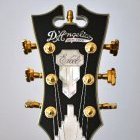


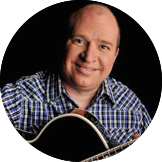
(4).thumb.jpg.b82382565482ddec414f14d27a54d8b5.jpg)

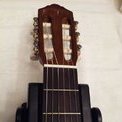
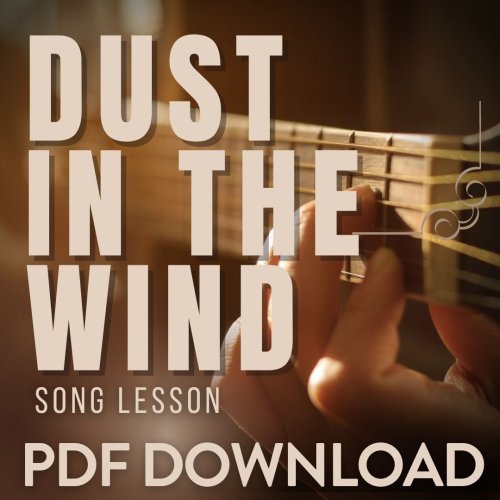
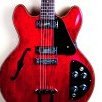
.thumb.jpg.81f2d0e084fbcdbb2d93ab7e8fb383ec.jpg)
